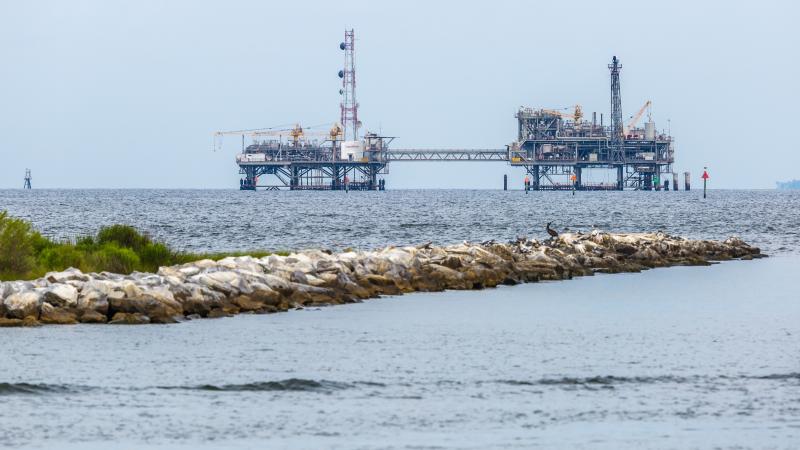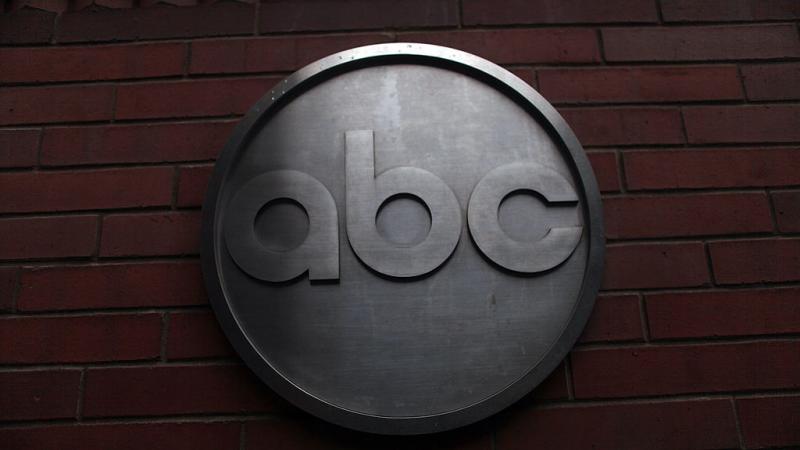Musk’s Grok AI facility faces opposition as environmentalists target data centers’ emissions
Tech companies are looking to natural gas to power their data centers with natural gas. Opponents of Elon Musk's Memphis facility say its turbines are "silent strangulation" by air pollution. When a scientific analysis failed to find dangerous levels of pollutants, the opponents refused to accept the findings.
The growth of AI computing is presenting challenges to meeting the high energy demands that the data centers place on the power grid. To meet their need for electricity, tech companies are turning to natural gas to provide power, which has made AI a target of environmentalists. When tech titan Elon Musk enters the picture, the controversy only grows louder.
Musk’s xAI company built a data center in Memphis, Tennessee, last year. According to the Memphis Chamber of Commerce, the facility will bring up to 500 well-paying jobs to the city.
The facility is partially powered by dozens of small natural-gas turbines — most of which are temporary. A relentless environmentalist campaign erupted, accusing the facility of polluting the skies over predominantly black neighborhoods. The city responded by conducting air quality tests, which showed no dangerous levels of pollutants.
Rather than ease the environmentalists’ concerns, the protesters have refused to accept the findings of the analysis. The NAACP has notified xAI of its intent to sue in 60 days, a prerequisite to filing a lawsuit under the Clean Air Act, alleging that the facility is operating without the proper air permits, which xAI denies.
AI and its hunger for electrical power
Tech companies were once vocal champions of 100% renewable energy. But meeting the 24/7 demands of a data center with intermittent renewable energy and battery facilities is enormously expensive and difficult, and so natural gas is becoming the preferred means of supplying power to data centers.
According to Penn State's Institute of Energy and the Environment, AI, particularly large language models (LLMs), requires enormous computational resources. Training these models involves thousands of graphics processing units (GPUs) running continuously for months, leading to high electricity consumption.
By 2030–2035, data centers could account for 20% of global electricity use, putting an immense strain on power grids, the university says.
The Lawrence Berkeley National Laboratory, part of the University of California system, published a report last year with data showing that the electricity consumption of U.S. data centers is growing at an accelerating rate, showing a compound annual growth rate of approximately 7% of all electrical consumption from 2014 to 2018, increasing to 18% between 2018 and 2023, and then
forecast as high as 13% to 27% between 2023 and 2028.
Musk's support for Trump changed environmentalists' tune
Once beloved by the left for his promotion of solar power and electric vehicles, Musk became the target of the left’s vitriol, including widespread attacks on Teslas and Tesla dealerships, including arson and vandalism, because of his support of the successful Trump presidential campaign and the Department of Government Efficiency (DOGE).
In July 2024, Musk’s xAI company brought online Colossus in Memphis, Tennessee, a massive data center supporting Grok, an AI competitor to ChatGPT. ChatGPT is owned and developed by OpenAI, an artificial intelligence research and deployment company. OpenAI is structured as a hybrid for-profit and nonprofit entity, with a unique structure to cap investor profits. While OpenAI is the owner, they have received significant investment from companies like Microsoft, according to financial newsletter The Motley Fool.
xAI originally planned to use 150 megawatts of power, according to the Southern Environmental Law Center (SELC), but those plans grew. According to the NAACP, xAI installed at its peak as many as 35 natural gas turbines, generating approximately 422 megawatts of power. Over the course of one month, that would be enough to power over 30,000 average homes.
According to a response from the Shelby County Health Department to comments the SELC submitted on the company’s permit request for permanent turbines, most of the turbines on the site are going to be removed this month. Most of the comments the SELC submitted, according to the department, were regarding these temporary turbines. Because they are temporary, the permit wasn’t related to them. The permit, which was issued Wednesday, allows for only 15 permanent turbines.
Follow the science, except when it becomes political
The SELC and other environmental groups lobbied to get the Tennessee Valley Authority Board of Directors to deny the facility its needed power supply, arguing that it would strain the power grid and worsen air quality. In November, the board granted the company its request for power.
“The ongoing policy violence that allows xAI to continue the consistent damaging of our lungs in Southwest Memphis is immoral, we deserve clean air, not silent strangulation,” KeShaun Pearson, president of Memphis Community Against Pollution, said in a statement. The self-described "environmental justice organization" is a non-profit entity, and has been funded in the past by The Tides Foundation, named in congressional testimony as being linked to left-wing billionaire George Soros.
A SELC press release released last week claims that the facility’s natural gas turbines “release smog-forming pollution and hazardous chemicals like formaldehyde. These pollutants are tied to increases in asthma, respiratory diseases, heart problems, and certain cancers and are especially harmful to children.”
Examining critics' claims that their air was turning to poison as a result of the facility, the City of Memphis contracted an independent, accredited laboratory to perform air quality testing in three neighborhoods around the facility. The tests measured the levels of benzene, toluene, formaldehyde, nitrogen dioxide, sulfur dioxide, carbon monoxide, and particulate matter — key pollutants that are known to impact health.
The city released the findings of the analysis last week, and it found that at all three sites, levels were "At every site and for every pollutant tested, levels were either too low to detect or well below established safety thresholds. Only one sample – formaldehyde at City Hall on June 13 – slightly exceeded the lab’s Limit of Quantitation (LOQ), yet even that result remained far beneath any level of health concern."
“The City doesn’t control air quality regulations, but we stepped up to find answers. The initial results showed no dangerous levels of air pollutants at any of the tested sites. We are committed to ongoing testing to continue to inform and protect our community,” Memphis Mayor Paul Young said in a statement.
The facility’s opponents were not reassured by the scientific evidence showing the facility is not damaging their lungs. Patrick Anderson, senior attorney for the SELC, said the analysis “creates a misleading narrative” and is a “distraction from the persistent and unhealthy air pollution problems that Memphians face every day.”
“The city failed to measure ozone pollution — better known as smog — which we already know is a major problem in the Memphis area. Smog can make it harder for people to breathe and is tied to increased rates of asthma and other respiratory illnesses. It’s unclear why the city would not test for this harmful pollutant,” Anderson said in the statement sent to Just the News.
Tennessee state Rep. Justin Pearson, a Democrat, penned an op-ed in MSNBC that called the science “irresponsible” with a “miniscule” sample size. As did the SELC, he criticized the analysis for not measuring ozone. Pearson was graduated from Bowdoin College in Brunswick, Maine, majoring in Government & Legal Studies with a minor in Education Studies, and has no apparent academic background in medicine, chemistry or environmental science.
His official government resume shows his areas of expertise include "Liberation Christianity" and involvement in "The Poor People's Campaign," which describes one of its key principles as being "committed to lifting up and deepening the leadership of those most affected by systemic racism, poverty, the war economy, and ecological devastation and to building unity across lines of division."
Mischaracterizing ozone measurement
According to the Environmental Protection Agency, ozone is not emitted directly into the air by cars, power plants, industrial boilers, refineries, chemical plants or other industrial sources. Instead, it’s created by chemical reactions between oxides of nitrogen (NOx) and volatile organic compounds (VOC) -- also called "ozone precursors" -- with sunlight.
John Zeanah, chief of development and infrastructure for the City of Memphis, told Just the News that the analysis was measuring the precursors of ozone pollution. “The elements that were tested included many of the precursors for ozone — nitrogen oxides and several VOCs — that are precursors to ozone. The ozone is not emitted from the burning of the gas. It's created by the emission of these precursors being exposed to sunlight,” Zeanah explained.
Just the News asked the SELC if it was aware that the test was measuring ozone pollution by measuring levels of precursors and was only sent a statement from Anderson -- an SELC lawyer, not a scientist -- reiterating the SELC’s criticism of the study, and declined to answer the question.
“Nearly all of the air monitors in the Memphis metro have recorded ozone concentrations that violate the federal standard. These monitors also show that the problem is getting worse—not better. As community members have warned for the last year, smog-forming pollution is a major concern with the unpermitted turbines being run at xAI’s South Memphis data center,” Anderson said. The SELC did not provide data from the air monitors.
A new environmentalist cause
The Department of Energy estimates that in 2023, data centers accounted for approximately 4.4% of the total U.S. electricity consumption. Independent energy consulting service Rystad Energy reported in March that the inventory of planned natural-gas generation projects in the utility sector increased from 6 gigawatts in late 2023 to 17.5 gigawatts currently, which is the highest since 2017. These planned projects are the result of either population growth or increased demand from data centers, according to Rystad.
Environmentalists are beginning to argue that growth in this industry in the United States is a threat to their goals of maintaining a grid powered by admittedly intermittent and unreliable energy sources.
“Power-hungry data centers… are causing a massive increase in new demand for electricity throughout the country — delaying coal plant retirements and causing utilities to propose a lot of new gas-burning power plants — resulting in more air pollution and skyrocketing electric rates,” the Sierra Club warned in March.
As more data centers are built -- and as the Trump administration continues to rack up political, legal and legislative pro-energy wins -- it’s likely environmentalists will be rallying people against this growing industry as it has other infrastructure facilitating the use and production of fossil fuels.
The Facts Inside Our Reporter's Notebook
Documents
Links
- target of environmentalists
- xAI company
- 500 well-paying jobs to the city
- 100% renewable energy
- enormously expensive
- natural gas is becoming the preferred means
- beloved by the left
- including widespread attacks on Teslas
- xAI company
- brought online Colossus
- Grok
- ChatGPT
- Southern Environmental Law Center
- over 30,000 average homes
- according to a response
- which was issued Wednesday
- said in a statement
- said in a statement
- penned an op-ed in MSNBC
- according to the Environmental Protection Agency
- John Zeanah
- Department of Energy estimates
- Rystad Energy reported
- Sierra Club warned in March













